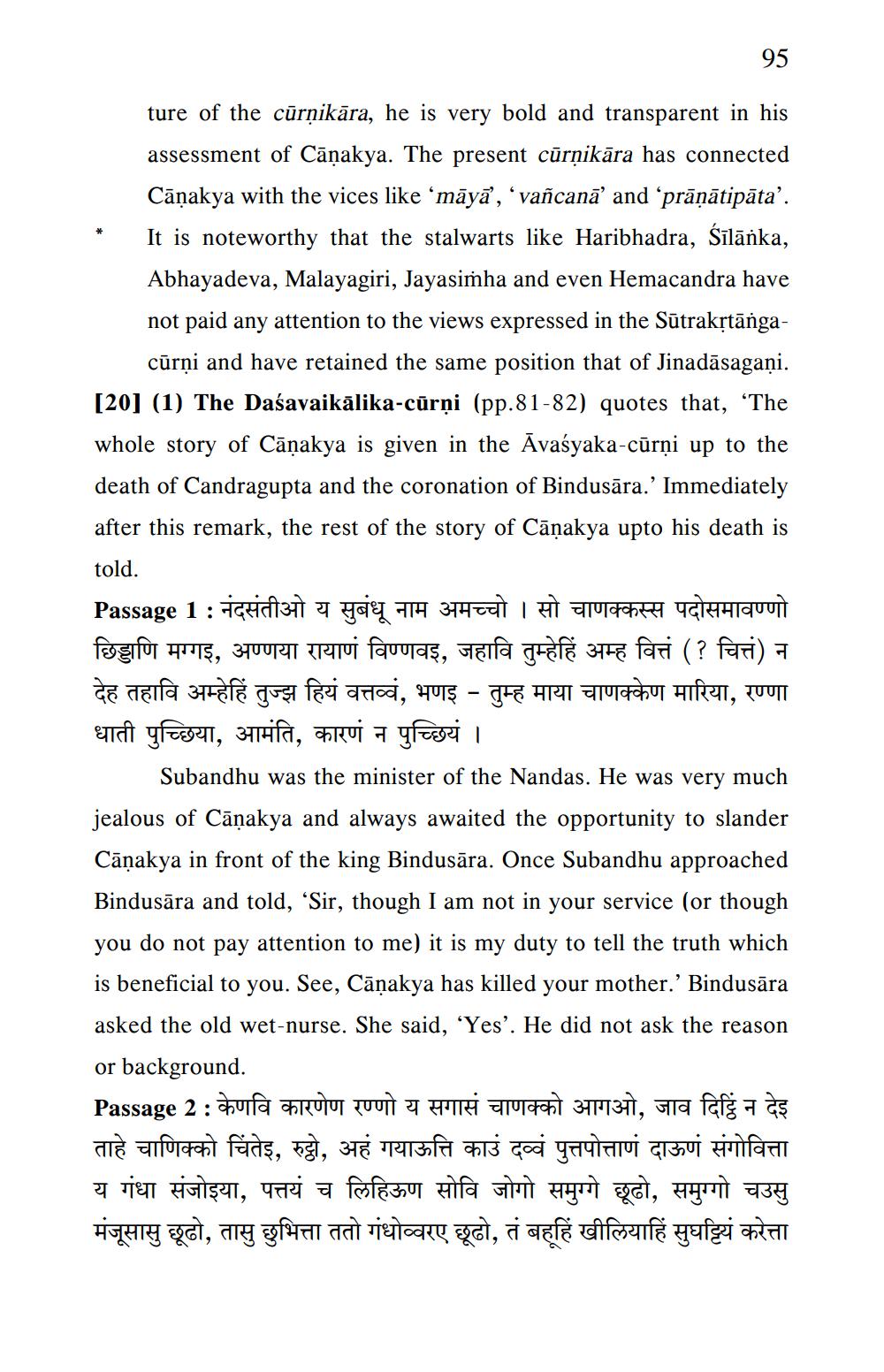________________
95
ture of the curṇikāra, he is very bold and transparent in his assessment of Caṇakya. The present cūrṇikāra has connected Cānakya with the vices like ‘māyā', ‘vañcanā' and ‘prānātipāta'. It is noteworthy that the stalwarts like Haribhadra, Śīlānka, Abhayadeva, Malayagiri, Jayasimha and even Hemacandra have not paid any attention to the views expressed in the Sūtrakṛtāngacūrṇi and have retained the same position that of Jinadāsagaṇi. [20] (1) The Daśavaikālika-cūrni (pp.81-82) quotes that, ‘The whole story of Cāṇakya is given in the Avaśyaka-cūrṇi up to the death of Candragupta and the coronation of Bindusāra.' Immediately after this remark, the rest of the story of Caṇakya upto his death is told.
Passage 1 : नंदसंतीओ य सुबंधू नाम अमच्चो । सो चाणक्कस्स पदोसमावण्णो छिड्डाणि मग्गइ, अण्णया रायाणं विण्णवइ, जहावि तुम्हेहिं अम्ह वित्तं (? चित्तं) न देह तहावि अम्हेहिं तुज्झ हियं वत्तव्वं, भणइ - तुम्ह माया चाणक्केण मारिया, रण्णा धाती पुच्छिया, आमंति, कारणं न पुच्छियं ।
Subandhu was the minister of the Nandas. He was very much jealous of Cāṇakya and always awaited the opportunity to slander Caṇakya in front of the king Bindusāra. Once Subandhu approached Bindusāra and told, 'Sir, though I am not in your service (or though you do not pay attention to me) it is my duty to tell the truth which is beneficial to you. See, Cāṇakya has killed your mother.' Bindusāra asked the old wet-nurse. She said, 'Yes'. He did not ask the reason or background.
Passage 2 : केणवि कारणेण रण्णो य सगासं चाणक्को आगओ, जाव दिट्ठि न देइ ताहे चाणिक्को चिंतेइ, रुट्ट्टो, अहं गयाऊत्ति काउं दव्वं पुत्तपोत्ताणं दाऊणं संगवित्ता य गंधा संजोइया, पत्तयं च लिहिऊण सोवि जोगो समुग्गे छूढो, समुग्गो चउसु मंजूसासु छूढो, तासु छुभित्ता ततो गंधोव्वरए छूढो, तं बहूहिं खीलियाहिं सुघट्टियं करेत्ता




